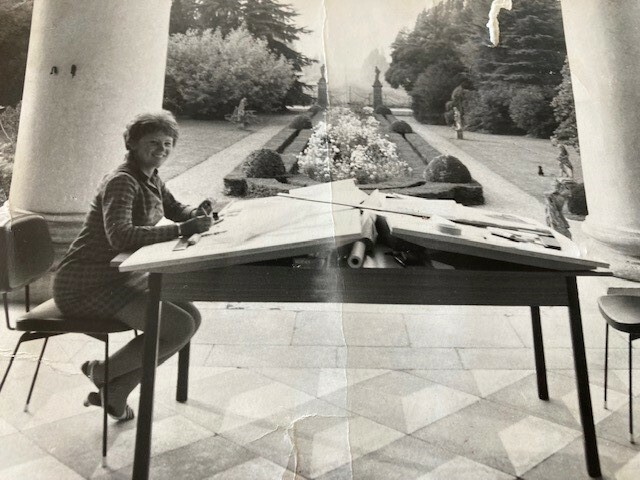Meet the Pioneers: A 90th Birthday Interview with Iona Gibson, Conservation Architect
- | Louisa Hunt with Iona Gibson

This year, Iona Gibson celebrated her 90th birthday and looks back on her career in conservation. Iona is an architect who worked with Donald for 48 years, joining the practice in 1959 and was instrumental in defining our approach to contemporary architecture in the historic environment.
What first inspired you to become an architect?
A visit to my father’s architect cousin, Jean Reid, in Edinburgh, where she worked in the planning department. She gave me a copy of Banister Fletcher, which I found fascinating and kept me occupied later when I was bed-bound with a bad attack of chickenpox.
When did you join Donald Insall’s practice, and what initially drew you to the conservation world?
I joined Insalls in 1959. At that time, only four people were working with him, and the practice operated from his flat. I was initially taken on to design a new group of houses adjacent to the attractive village of Shincliffe near Durham. My role in the practice continued as the designer of contemporary buildings for sensitive sites, initiating improvements to and new uses for historic buildings. I designed various housing schemes, many in and around Durham.
How has the field of conservation architecture evolved since you first started working? What have the significant changes been?
Since I first joined Insall, when it was common to demolish historic buildings and country houses, there have been many changes in Conservation. The significant changes include the growth of amenity groups – the higher profile of SPAB, increase in conservation officers and associations such as IHBC; expansion of the listing system; projects shown on television – the Restoration series and the Reconstruction of Notre Dame; increase in IT and computers and less secretarial and library staff; digital photography; more value in sustainability and awareness of climate change; more building regulations and more public
interest in historic buildings.
What are some of your favourite projects you’ve worked on throughout your career?
Some of my favourite projects have been: the new Mews Houses in Kinnerton Street, Belgravia, which matched the materiality and small scale of the surrounding buildings but with a contemporary approach; Villa Corner Treviso, Veneto, Italy; many new buildings at Woldingham School Surrey; Banqueting Hall, Whitehall and Windsor Castle, where I was part of the large team working on the reconstruction after the disastrous fire in 1992.
Which architects have been your greatest inspiration throughout your career?
Some of the architects who have had an influence on my work have been Arne Jacobsen, Alvar Aalto, Ludwig Mies van der Rohe, Rob Erskine, Maxwell Fry and Peter Aldington.
What would you like to have been if you had not become a conservationist?
When young, I thought I might become a doctor but happily chose architecture. This gives continuing enjoyment and, amongst other things, teaches one to look at and appreciate one’s surroundings, be they buildings, nature or the sea; one of my passions is sailing.